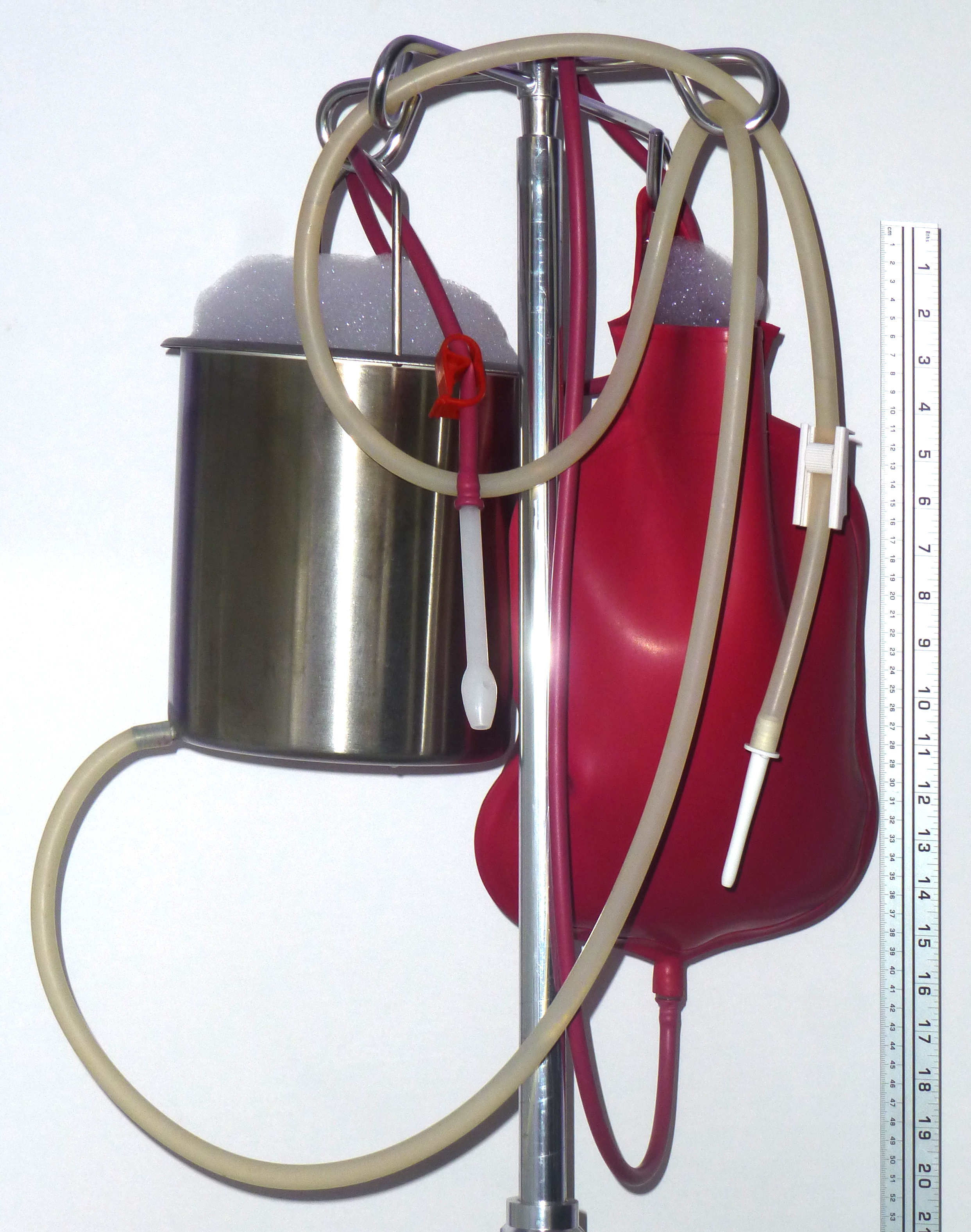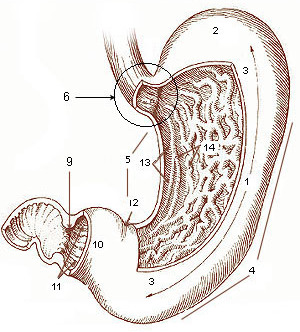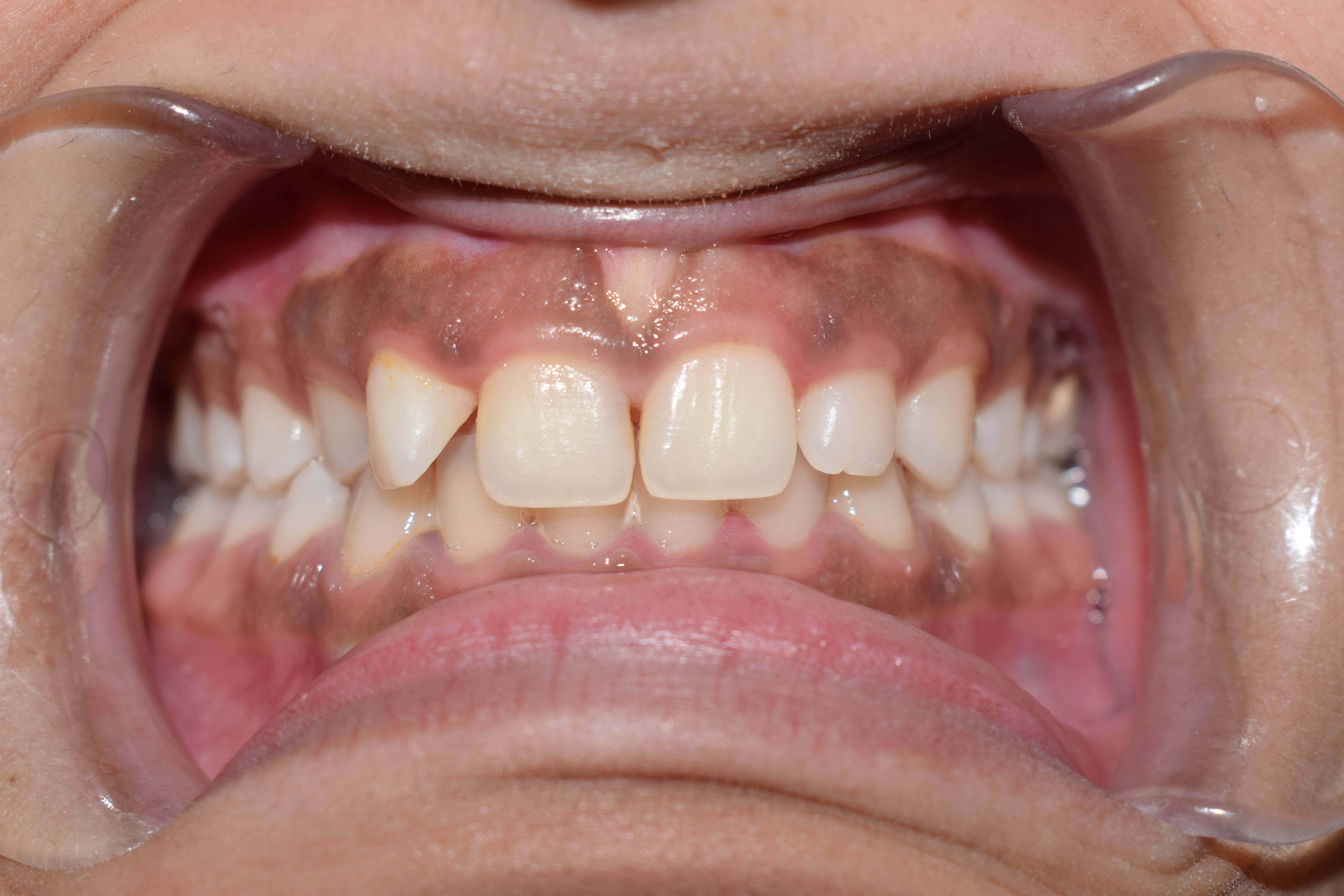|
Parenteral
A route of administration in pharmacology and toxicology is the way by which a drug, fluid, poison, or other substance is taken into the body. Routes of administration are generally classified by the location at which the substance is applied. Common examples include oral and intravenous administration. Routes can also be classified based on where the target of action is. Action may be topical (local), enteral (system-wide effect, but delivered through the gastrointestinal tract), or parenteral (systemic action, but delivered by routes other than the GI tract). Route of administration and dosage form are aspects of drug delivery. Classification Routes of administration are usually classified by application location (or exposition). The route or course the active substance takes from application location to the location where it has its target effect is usually rather a matter of pharmacokinetics (concerning the processes of uptake, distribution, and elimination of drugs) ... [...More Info...] [...Related Items...] OR: [Wikipedia] [Google] [Baidu] |
Intravenous Therapy
Intravenous therapy (abbreviated as IV therapy) is a medical technique that administers fluids, medications and nutrients directly into a person's vein. The intravenous route of administration is commonly used for rehydration or to provide nutrients for those who cannot, or will not—due to reduced mental states or otherwise—consume food or water by mouth. It may also be used to administer medications or other medical therapy such as blood products or electrolytes to correct electrolyte imbalances. Attempts at providing intravenous therapy have been recorded as early as the 1400s, but the practice did not become widespread until the 1900s after the development of techniques for safe, effective use. The intravenous route is the fastest way to deliver medications and fluid replacement throughout the body as they are introduced directly into the circulatory system and thus quickly distributed. For this reason, the intravenous route of administration is also used for the cons ... [...More Info...] [...Related Items...] OR: [Wikipedia] [Google] [Baidu] |
Dosage Form
Dosage forms (also called unit doses) are pharmaceutical drug products in the form in which they are marketed for use, with a specific mixture of active ingredients and inactive components ( excipients), in a particular configuration (such as a capsule shell, for example), and apportioned into a particular dose. For example, two products may both be amoxicillin, but one is in 500 mg capsules and another is in 250 mg chewable tablets. The term unit dose can also sometimes encompass non-reusable ''packaging'' as well (especially when each drug product is individually packaged), although the FDA distinguishes that by ''unit-dose "packaging" or "dispensing"''. Depending on the context, ''multi(ple) unit dose'' can refer to distinct drug products ''packaged'' together, or to a ''single'' drug product containing multiple drugs and/or doses. The term dosage form can also sometimes refer ''only'' to the pharmaceutical formulation of a drug product's constituent drug substance(s) and any ... [...More Info...] [...Related Items...] OR: [Wikipedia] [Google] [Baidu] |
Enema
An enema, also known as a clyster, is an injection of fluid into the lower bowel by way of the rectum.Cullingworth, ''A Manual of Nursing, Medical and Surgical'':155 The word enema can also refer to the liquid injected, as well as to a device for administering such an injection. In standard medicine, the most frequent uses of enemas are to relieve constipation and for bowel cleansing before a medical examination or procedure; also, they are employed as a lower gastrointestinal series (also called a barium enema), to treat traveler's diarrhea, as a vehicle for the administration of food, water or medicine, as a stimulant to the general system, as a local application and, more rarely, as a means of reducing temperature, as treatment for encopresis, and as a form of rehydration therapy (proctoclysis) in patients for whom intravenous therapy is not applicable. In other contexts, enemas are used by some alternative health therapies, used for enjoyment, chiefly as part of sexu ... [...More Info...] [...Related Items...] OR: [Wikipedia] [Google] [Baidu] |
Enteral Administration
Enteral administration is food or drug administration via the human gastrointestinal tract. This contrasts with parenteral nutrition or drug administration (Greek ''para'', "besides" + ''enteros''), which occurs from routes outside the GI tract, such as intravenous routes. Enteral administration involves the esophagus, stomach, and small and large intestines (i.e., the gastrointestinal tract). Methods of administration include oral, sublingual (dissolving the drug under the tongue), and rectal. Parenteral administration is via a peripheral or central vein. In pharmacology, the route of drug administration is important because it affects drug metabolism, drug clearance, and thus dosage. The term is from Greek ''enteros'', "intestine". Forms Enteral administration may be divided into three different categories, depending on the entrance point into the GI tract: oral (by mouth), gastric (through the stomach), and rectal (from the rectum). (Gastric introduction involves the use of ... [...More Info...] [...Related Items...] OR: [Wikipedia] [Google] [Baidu] |
120310-F-XC314-001 (6979611329)
1 (one, unit, unity) is a number representing a single or the only entity. 1 is also a numerical digit and represents a single unit of counting or measurement. For example, a line segment of ''unit length'' is a line segment of length 1. In conventions of sign where zero is considered neither positive nor negative, 1 is the first and smallest positive integer. It is also sometimes considered the first of the infinite sequence of natural numbers, followed by 2, although by other definitions 1 is the second natural number, following 0. The fundamental mathematical property of 1 is to be a multiplicative identity, meaning that any number multiplied by 1 equals the same number. Most if not all properties of 1 can be deduced from this. In advanced mathematics, a multiplicative identity is often denoted 1, even if it is not a number. 1 is by convention not considered a prime number; this was not universally accepted until the mid-20th century. Additionally, 1 is the ... [...More Info...] [...Related Items...] OR: [Wikipedia] [Google] [Baidu] |
Rectum
The rectum is the final straight portion of the large intestine in humans and some other mammals, and the gut in others. The adult human rectum is about long, and begins at the rectosigmoid junction (the end of the sigmoid colon) at the level of the third sacral vertebra or the sacral promontory depending upon what definition is used. Its diameter is similar to that of the sigmoid colon at its commencement, but it is dilated near its termination, forming the rectal ampulla. It terminates at the level of the anorectal ring (the level of the puborectalis sling) or the dentate line, again depending upon which definition is used. In humans, the rectum is followed by the anal canal which is about long, before the gastrointestinal tract terminates at the anal verge. The word rectum comes from the Latin '' rectum intestinum'', meaning ''straight intestine''. Structure The rectum is a part of the lower gastrointestinal tract. The rectum is a continuation of the sigmoi ... [...More Info...] [...Related Items...] OR: [Wikipedia] [Google] [Baidu] |
Stomach
The stomach is a muscular, hollow organ in the gastrointestinal tract of humans and many other animals, including several invertebrates. The stomach has a dilated structure and functions as a vital organ in the digestive system. The stomach is involved in the gastric phase of digestion, following chewing. It performs a chemical breakdown by means of enzymes and hydrochloric acid. In humans and many other animals, the stomach is located between the oesophagus and the small intestine. The stomach secretes digestive enzymes and gastric acid to aid in food digestion. The pyloric sphincter controls the passage of partially digested food ( chyme) from the stomach into the duodenum, where peristalsis takes over to move this through the rest of intestines. Structure In the human digestive system, the stomach lies between the oesophagus and the duodenum (the first part of the small intestine). It is in the left upper quadrant of the abdominal cavity. The top of the stomach lies ... [...More Info...] [...Related Items...] OR: [Wikipedia] [Google] [Baidu] |
Sublingual Administration
Sublingual (abbreviated SL), from the Latin for "under the tongue", refers to the pharmacological route of administration by which substances diffuse into the blood through tissues under the tongue. The sublingual glands receive their primary blood supply from the sublingual and submental arteries, which are branches of the lingual artery and facial artery, respectively. These arteries are both branches of the external carotid artery. The sublingual vein drains into the lingual vein, which then flows into the internal jugular system. The sublingual glands receive their parasympathetic input via the chorda tympani nerve, which is a branch of the facial nerve via the submandibular ganglion. The nerve functions in a secretomotor capacity. The chorda tympani branches from the motor branch of the facial nerve in the middle ear cavity, which then exits the middle ear through the petrotympanic fissure. The chorda tympani then travels with the lingual nerve to synapse at the s ... [...More Info...] [...Related Items...] OR: [Wikipedia] [Google] [Baidu] |
Sublabial Administration
Sublabial administration, literally "under the lip", from Latin, refers to the pharmacological route of administration by which the active substance is placed between the lip and the gingiva (gum). Sublabial administration should not be confused with sublingual administration, which is under the tongue. The frenulum of the tongue may be irritated when in contact with corrosive materials but can be avoided with this route. It is usually used for medications such as glyceryl trinitrate, for example, in angina pectoris.FASS.se (Farmaceutiska Specialiteter i Sverige – the Swedish official drug catalog) > Suscard (Glyceryl trinitrate)Retrieved on April 25, 2010 Upper lip administration Some drugs are inactive in the digestive tract, but this can be avoided if held between the upper lip The lips are the visible body part at the mouth of many animals, including humans. Lips are soft, movable, and serve as the opening for food intake and in the articulation of sound and speech. H ... [...More Info...] [...Related Items...] OR: [Wikipedia] [Google] [Baidu] |
Gingiva
The gums or gingiva (plural: ''gingivae'') consist of the mucosal tissue that lies over the mandible and maxilla inside the mouth. Gum health and disease can have an effect on general health. Structure The gums are part of the soft tissue lining of the mouth. They surround the teeth and provide a seal around them. Unlike the soft tissue linings of the lips and cheeks, most of the gums are tightly bound to the underlying bone which helps resist the friction of food passing over them. Thus when healthy, it presents an effective barrier to the barrage of periodontal insults to deeper tissue. Healthy gums are usually coral pink in light skinned people, and may be naturally darker with melanin pigmentation. Changes in color, particularly increased redness, together with swelling and an increased tendency to bleed, suggest an inflammation that is possibly due to the accumulation of bacterial plaque. Overall, the clinical appearance of the tissue reflects the underlying histology ... [...More Info...] [...Related Items...] OR: [Wikipedia] [Google] [Baidu] |
Buccal Administration
Buccal administration is a topical route of administration by which drugs held or applied in the buccal () area (in the cheek) diffuse through the oral mucosa ( tissues which line the mouth) and enter directly into the bloodstream. Buccal administration may provide better bioavailability of some drugs and a more rapid onset of action compared to oral administration because the medication does not pass through the digestive system and thereby avoids first pass metabolism. As of May 2014, the psychiatric drug asenapine; the opioid drugs buprenorphine, naloxone, and fentanyl; the cardiovascular drug nitroglycerin; the nausea medication prochlorperazine; the hormone replacement therapy testosterone; and nicotine as a smoking cessation aid were commercially available in buccal forms, as was midazolam, an anticonvulsant, used to treat acute epileptic seizures. Buccal administration of vaccines has been studied, but there are challenges to this approach due to immune tolerance me ... [...More Info...] [...Related Items...] OR: [Wikipedia] [Google] [Baidu] |
.jpg)







